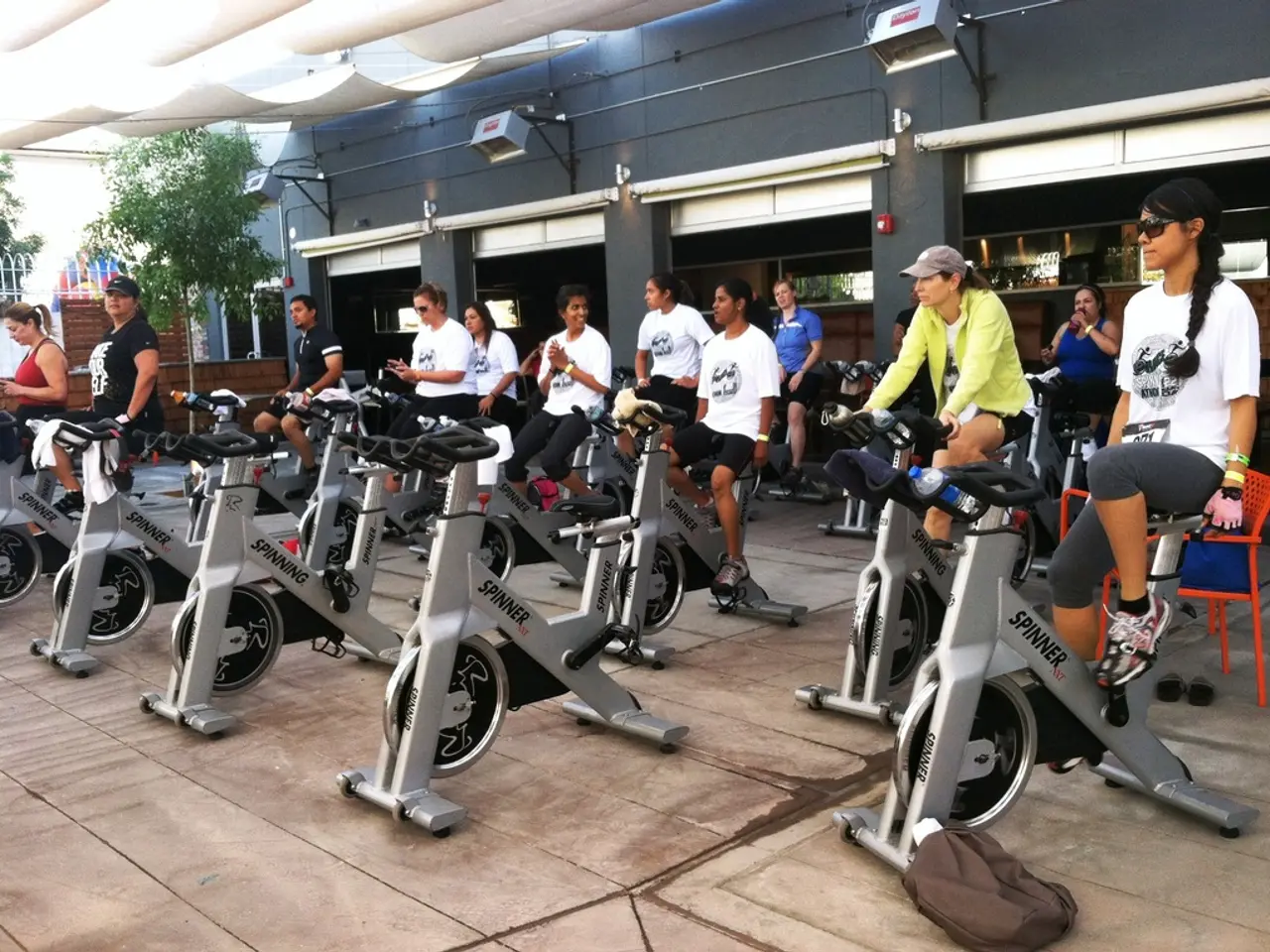"Patient found medical advice to be misleading - experiencing RED symptoms"
Relative Energy Deficiency in Sport (RED-S) is a condition that has gained increasing attention in the world of sports, affecting both male and female athletes. This complex syndrome, characterised by low energy availability, can manifest differently in each individual, making it a challenging condition to detect without careful clinical evaluation.
The symptoms of RED-S are far-reaching, impacting various physiological and psychological systems. Common indicators include disordered eating behaviours, noticeable weight loss, fatigue, decreased mental well-being, hair loss, cold hands and feet, dry skin, increased injury risk, slower injury healing, impaired immune function, hormonal disruptions, cardiovascular effects, metabolic changes, and performance-related issues.
Disordered eating, a significant contributing factor to RED-S, is more prevalent in women than men. This can manifest in various ways, such as restrictive eating, fasting, self-induced vomiting, limiting food groups, and adhering to clean-eating trends. It's important to note that disordered eating can be intentional or unintentional, with the latter often occurring due to miscalculating caloric needs.
One of the key female-specific indicators of RED-S is menstrual dysfunction. However, it's crucial to note that women who are using hormonal birth control do not have true menstrual bleeds, only a withdrawal bleed, which cannot be used to assess hormonal health.
In some cases, RED-S can be caused by following nutritional advice aimed at less active people. This underscores the importance of tailoring dietary advice to an individual's activity level.
Georgia Williams, a renowned New Zealand athlete, experienced the consequences of RED-S firsthand. In July 2018, she suffered a crash that fractured her pelvis, hip, and sacrum. Her condition was marked by the loss of her periods, a condition called hypothalamic amenorrhea (HA), a key symptom of RED-S.
Finding qualified assistance for RED-S recovery can be challenging due to the condition's relatively new status. However, resources such as 'Project RED-S' (red-s.com) provide valuable information for locating RED-S providers in the UK and US. A RED-S care team should ideally include a physician, nutritionist, and psychologist with experience in eating disorders.
It's essential to distinguish between disciplined "athlete eating" and disordered eating. While athletes may need to consume large amounts of food to fuel their training, disordered eating involves behaviours that compromise an athlete's health and performance.
In conclusion, RED-S is a multifaceted condition that can affect anyone who underfuels, regardless of their level in cycling. Given its prevalence and the potential severity of its symptoms, it's crucial for athletes to be aware of the signs of RED-S and seek help if necessary.
[1] Ashton, A. R., et al. (2019). The Female Athlete Triad: Relative Energy Deficiency in Sport. British Journal of Sports Medicine, 53(11), 676-683. [2] Mountjoy, M., et al. (2014). IOC consensus statement: beyond the Female Athlete Triad—Relative Energy Deficiency in Sport (RED-S). British Journal of Sports Medicine, 48(5), 397-404. [3] Loucks, A. B., et al. (2014). Defining relative energy deficiency in sport and its application to clinical practice. Journal of Sports Sciences, 32(Suppl_1), S29-S36. [4] Sundgot-Borgen, J., et al. (2019). The IOC consensus statement: Beyond the Female Athlete Triad—Relative Energy Deficiency in Sport (RED-S). British Journal of Sports Medicine, 53(11), 684-687. [5] Warren, M. P., et al. (2014). The IOC consensus statement: Beyond the Female Athlete Triad—Relative Energy Deficiency in Sport (RED-S). British Journal of Sports Medicine, 48(5), 405-407.
- The impact of RED-S extends to both physical and mental health, with common symptoms including decreased mental well-being and disordered eating behaviors, which are more prevalent in women than men.
- Women's health is particularly affected by RED-S, with menstrual dysfunction being a key indicator. However, it's crucial to differentiate between true menstrual bleeds and withdrawal bleeds for those using hormonal birth control, as the latter cannot assess hormonal health accurately.




